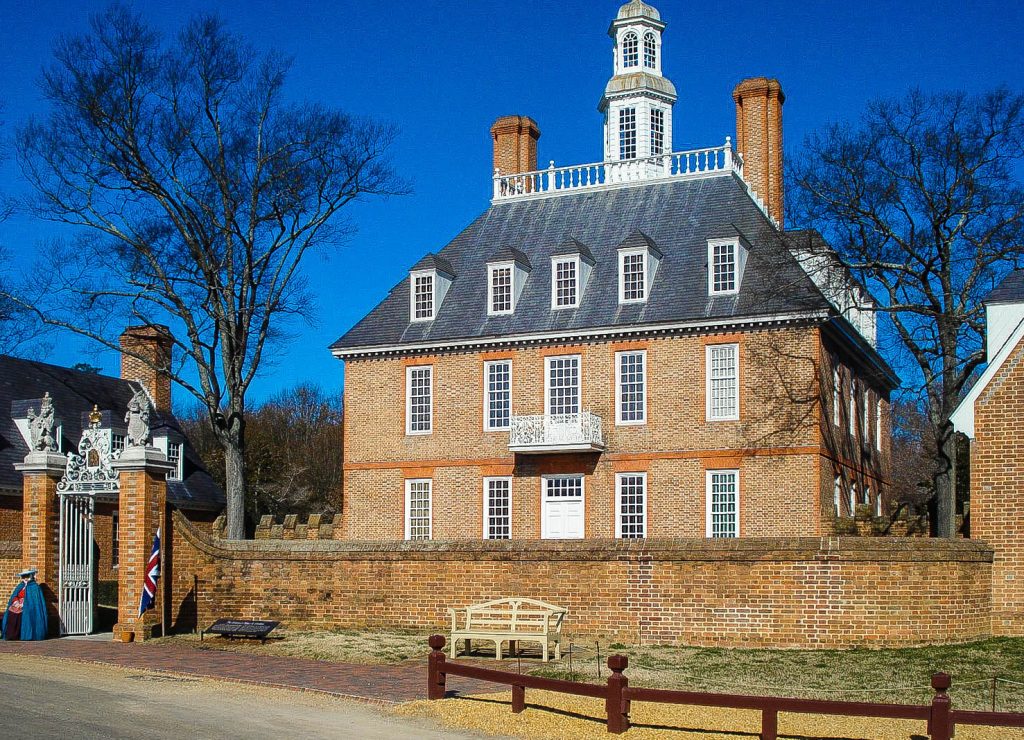The muskets gleam in a circle overhead, like newly polished spokes of an enormous carriage wheel. Their extended bayonets sparkle uniformly silver at the hub; the nutmeg to chestnut wood of the guns subtly shines against the white ceiling. Below them, gold-tassled, red-white-and-blue flags mark an arched passageway. The arch is flanked on each side by twelve gold-hilted, silver-bladed swords, criss-crossed like garden trellisses. On the right, dark wooden wall, flanked by upright muskets, is a circle of pistols, with their curved, uniformly spaced butts giving the illusion of slowly spinning. On the left wall, also flanked by muskets, hangs the royal coat of arms; its golden lions roar the authority of the Crown. But the weapons boom its power.
Virginia‘s original Governor’s Palace in Williamsburg was completed in 1722, financed by a tax on imported slaves and liquor. It was home to seven royal governors of the Colony and the first two elected governors of the Commonwealth, Patrick Henry and Thomas Jefferson. Governor Jefferson was displeased with the Palace, calling it “not handsome … but spacious and commodious … and … capable of being made an elegant seat”, in his Notes on the State of Virginia. He drew up plans for its improvement, but the renovations were never made, as Richmond replaced Williamsburg as the young commonwealth’s capital in 1780. The original Palace burned to the ground on the night of December 22, 1781. It was reconstructed during the 1930s, relying in part on Governor Jefferson’s precise drawings.
Today, in Colonial Williamsburg, the Palace is shown as the home of Lord Dunmore, the last royal governor, in the twilight days of British rule. After admiring the arsenal of its entrance hall, guests can tour its large rooms, including audience rooms, the governor’s bedchamber, and the ballroom and its adjacent supper room, from which they may exit to a formal garden. The Palace’s extensive grounds grow tulips, English wallflowers, violas, pot marigolds, cowslips, apples, figs, plums, pears, peaches, and even a maze of boxwoods.
On April 19, 1775, the Revolutionary War began at Lexington, Massachusetts. Two days later, royal marines, acting under Governor Dunmore’s orders, removed gunpowder from Williamsburg’s Public Magazine. Protests broke out, and Governor Dunmore and his family fled Williamsburg for H.M.S. Fowey at Yorktown at about 2 a.m. on June 8.
After the Governor’s escape, twenty-four colonists transferred 230 muskets, 292 swords, and 18 incomplete pistols from the entrance hall and put them in the Public Magazine.
Power was moving away from the Crown, and toward the people.
After my misspent youth as a wage worker, I’m having so much more fun as a blogger, helping other discerning travellers plan fun and fascinating journeys. Read more …

